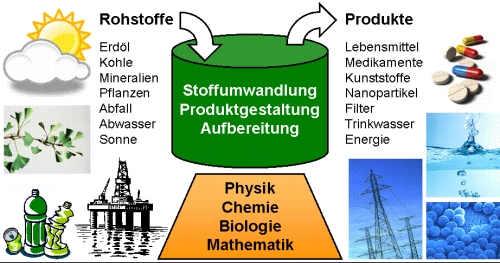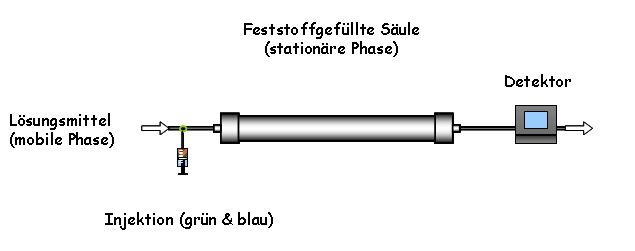What is Chemical Process Engineering?
What is Process Engineering?
Process Engineering deals with the conversion of raw materials to products of everyday life; as a many-faceted engineering discipline, it emp all of the natural sciences.

What is Chemical Process Engineering?
Chemical Process Engineering (CVT) is concerned with the conversion of materials in the laboratory or on an industrial scale. Products such as pharmaceutical drugs, fuels, and plastics make our lives comfortable. It is hard to imagine life without them. CVT provides natural-scientific and mathematical knowledge in order to achieve economical, safe, and environmentally friendly production processes. It is based on mass balances and energy flows. Numerical methods can be used here to simulate complex processes. Furthermore, the laws and findings of thermodynamics, heat and mass transfer, and reaction kinetics are applied. Three points of focus of the chair are briefly described below.
Reaction Engineering
Chemical reaction engineering concerns itself with the transfer of a chemical reaction found in the laboratory to an industrial scale, as well as the design and calculation of chemical reactors. This must include the shape, size, and operation of the reactor in order to acquire the required product quantities and attributes. Three typical reactor operating methods for material transformation are illustrated in animations 1 a)-c).
1a) batchwise stirred tank reactor
1b) continuous stirred-tank reactor
1c) continuous plug flow reactor
Chromatography
Chromatography (Greek, color writing) refers to a method, which allows the separation of a mixture of substances due to differences in the distribution of its individual components between a stationary and a mobile phase. The substances to be separated must have a different affinity (interaction) with respect to the solid. They then "walk" through the column at different speeds or leave them in succession → separation.
The principle of chromatography is shown in Animation 2 using the separation of blue and green dye.
